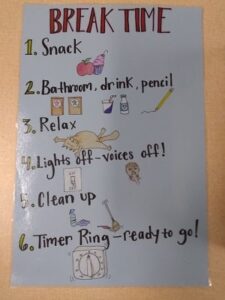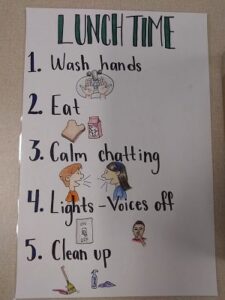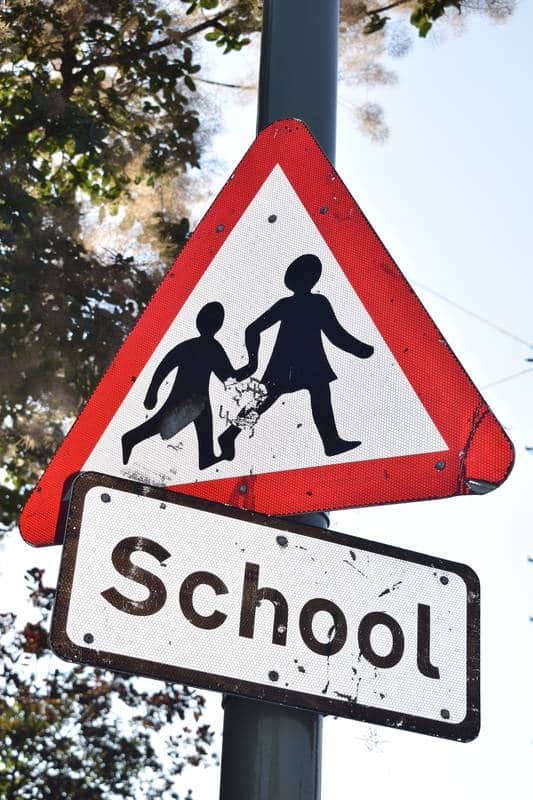Expectations and Order
★★★★★
Photo by Oliver Hale on Unsplash
Rules, laws, guidelines, expectations, or even commandments—as stated by the first grader who was handing out papers to a reluctant classmate, “You have to take it! It’s by her commandment.”
As we think and plan for a new school year, we consider these rules, guidelines, and expectations. What rules should we have for our classes? What are the expectations for our classes? What guidelines do we need?
We may not like rules and guidelines, but we need them to keep our classrooms functioning smoothly and to provide security for the students and structure for the class. When I introduce my classroom rules, we discuss why we need rules, and I may present a devotional about rules. (What if we didn’t have rules? What if there was no rule about stealing?)
Here are some guidelines for classroom rules. Keep the rules simple, and don’t have too many. Post the rules so you can refer to them throughout the year. At the beginning of the year, discuss the rules so the students know what they are and what they mean. Give examples and scenarios to help in explaining the rules. Explain any words that may be unfamiliar. (I once told a child to behave and then realized that this English language learner did not know what “behave” meant!)
I have six short rules:
- Be nice.
- Listen.
- Obey the teacher.
- Be respectful.
- Raise your hand before you talk.
- Clean up.
One year I had the students write the rules that they weren’t following. I referred to a rule–as in, “Look at number 4. ‘Be respectful.’ This includes your classmates and your teacher. Are you being respectful when you talk back to me?” This should usually be discussed with just the child, not in front of the whole class, although if the infraction occurred in front of the whole class, I may say, “Rule #4, Be respectful” in front of the class.
Expectations may be more specific than rules. I don’t post my expectations, but I do go over them at the beginning of the year, and several times throughout the first weeks of school. We may need to reteach expectations after a vacation, or periodically as a refresher. I have expectations for classroom behavior, doing classwork, for homework, for interactions, reading logs, cleaning up, and turning in assignments. When I am teaching, I expect the students to be listening. I tell them, “When I am talking, you are not.”
Expectations help the classroom to flow smoothly and students to work together. Teachers should determine their expectations before school starts, so the expectations can be clearly presented to the students. Decide how you will handle such areas as bathroom visits, getting drinks, water bottles, or sharpening pencils. Some of this may sound picky but it helps the classroom operate smoothly and the students to work together.
Some examples: I teach my students sign language for “bathroom” and “drink.” They may sign their requests to me while I’m teaching and I will sign back “yes” or “no.” This way the lesson is not interrupted and the child can slip out to the bathroom or to get a drink if I signed “yes.” When I’m presenting this area of expectations, I tell the children that they need to ask if it’s during class time, and if I’m teaching, they should try to wait. Water bottles are expected to be kept on the shelf. This was learned by experience! We had too many spills on desks and books to keep the water bottles on the desks.
I must communicate my expectations to the children. Modeling may be helpful in teaching the expectations. Think about areas such as, “When you are in line, what do you do? What do you do at lunchtime?” “What happens at recess?” I have some anchor charts that I pull out when I first teach expectations and when we need refreshers. One chart shows expectations for break-time and the other for lunchtime.


When I started teaching a new Sunday school class, I found I needed to tell them my expectations. I was expecting them to listen when I was teaching, and some children would whisper to their neighbors, or call out during the lesson. I realized that I was thinking of my school class where they knew my expectations about listening. A number of the Sunday school students are homeschooled and not familiar with classroom expectations. After I told them that I realized I hadn’t shared my expectations, and explained what I was looking for, they have cooperated very nicely.
Rules, guidelines, and expectations remind me of my student Chad. Chad tested all the boundaries for the first couple of weeks of school. Once he found that the boundaries did not move, he seemed to feel secure and was very cooperative. As teachers, this is the goal of rules and expectations. We don’t invent them for our sake so much as for the students’ sakes and to provide a productive, enjoyable learning environment for all of us.
Related Items
Leave a Reply
Feedback
